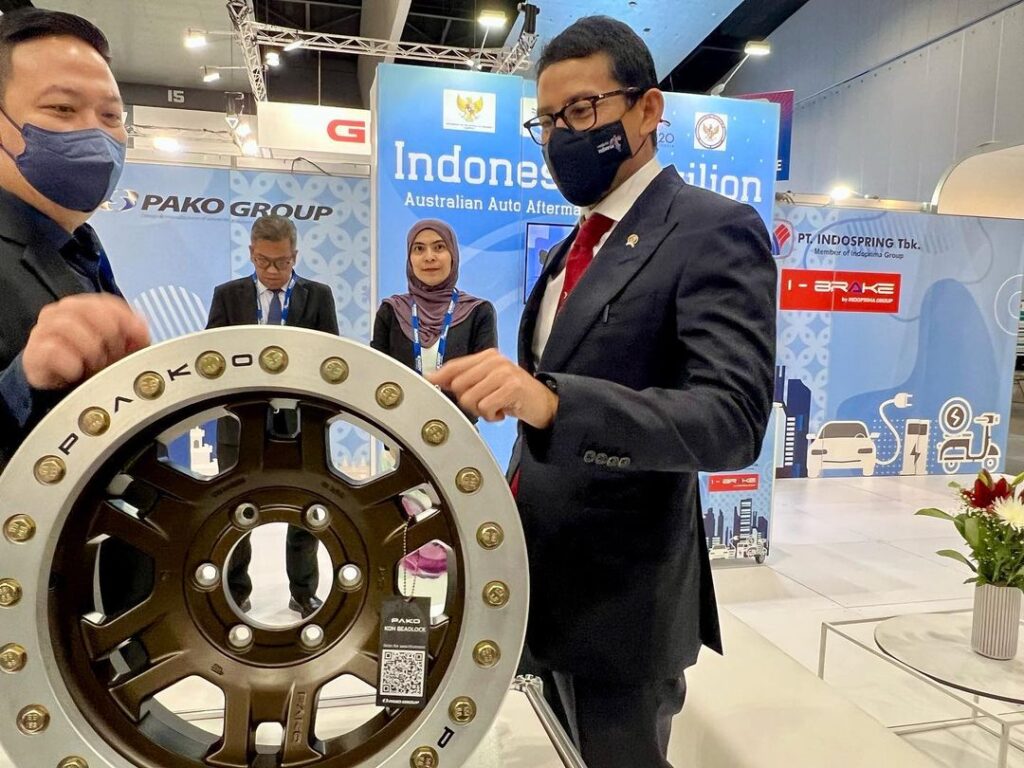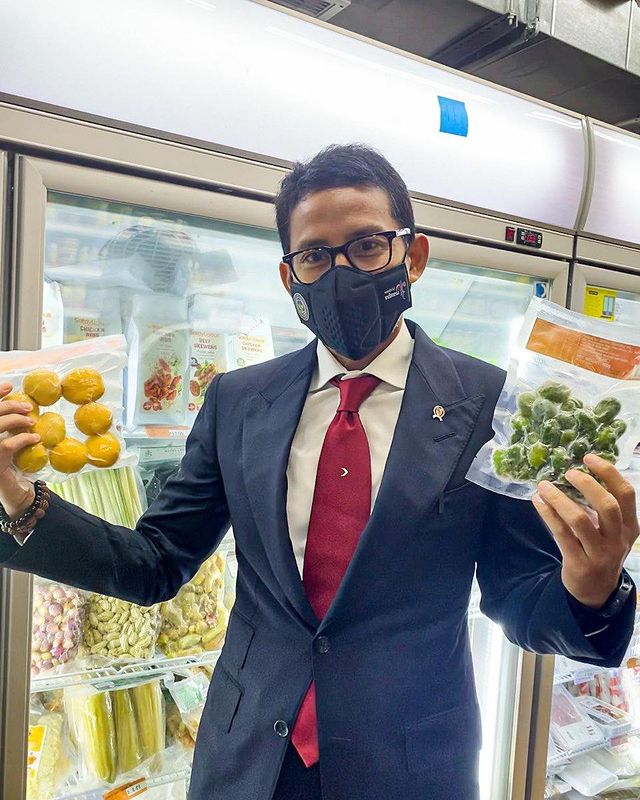
Melbourne, WARTA KEMA – Two years since the start of the Covid-19 pandemic, the virus still remains a part of our daily lives. As of early 2022, it may be too soon to declare the pandemic to be over. However, the world seems to already be preparing themselves in facing a post-pandemic era. With vaccination rates higher than ever, most countries’ borders have opened up and quarantine requirements for travelers are slowly disappearing. Like a light at the end of a long tunnel of uncertainty, there now seems to be a chance to successfully kick start the wilting global economy back to its former glory.
Not wanting to be left behind on the trend, this month the Indonesian government has carried out its first overseas ministerial visit since the pandemic. On 6-10 April 2022, the Minister for Tourism and Creative Economy, Sandiaga Uno, visited Melbourne as part of the effort to revive Indonesia’s tourism and creative economy sector. What exactly is the purpose and expected outcome for the Indonesian economy from this ministerial visit?
Aims and Purpose of the Visit
In an interview with Warta Kema, Mr. Sandiaga explained the purpose for his visit to one of Australia’s largest and busiest cities.
“My purpose is basically to recover the [tourism and creative economy] sectors and grow the economy because we have seen two years of pandemic. We want to make sure the sector that is home for 34 million Indonesian which lost millions of jobs during the pandemic could recover fast,” he says.
In his 4 day visit to the land down under, Mr. Sandiaga along with the Indonesian Consul General in Melbourne mostly attended international events such as SportNXT Summit and the Australian Auto Aftermarket Expo to support Indonesia’s standing in the respective events. Business meetings conducted by the Australia Indonesia Business Council (AIBC) were also held where he served as the main speaker, aiming to strengthen the ties between Indonesian and Australian investors.

Additionally, the timing of his visit also coincides with the 2022 Australian Formula 1 Grand Prix, where he was invited as a guest of the government. This is relevant since Indonesia has just concluded the Motorcycle Grand Prix in Mandalika a few weeks prior and serves as a potential field of cooperation between the two countries in coming years.
Tapping Into a Strong Tourism Market
As to why Australia out of all places became the first destination, Mr. Sandiaga admits that the deep economic relationship in the tourism sector between Indonesia and Australia is one of the main factors. On that note, he explains that in the post-pandemic era, values that relate to health and safety have become one of the public’s main concerns. Mr. Sandiaga intends to communicate Indonesia’s commitment of these values to the foreign market.
“Australia, Melbourne and Sydney in particular, have been a strong market for foreign tourists. As Australia opens up, we’re trying early on to be here and communicate to the market our strategy of cleanliness, health, safety, environmental sustainability, and moving from quantity based tourism to creative economic quality and sustainability,” he explains.
In his own words, quality means longer length of stay and better quality of spending. With those attributes, Mr. Sandiaga hopes that potential foreign tourists will support the local economy by buying Indonesian creative economy products.
“We aim to reach 1.4 million tourists from Australia, and this trip is the first of many further engagement and increase in the bilateral relationship between Indonesia and Australia,” he adds. It’s a long stretch from the thousands that came during the midst of the pandemic, but a realistic figure based on the statistics of foreign arrivals right before the pandemic started.
Supporting Indonesian Businesses

During his visit to the city, Mr. Sandiaga also set aside time to personally visit Indonesian businesses such as grocery stores and restaurants in order to extend the government’s support towards local entrepreneurs.
Melbourne is home to approximately a fifth of all Indonesians living in Australia. With such a large number of diaspora, there is a large exposure of Indonesian products and values aimed at foreigners. On his visit, Mr. Sandiaga emphasized the Indonesian government’s effort to facilitate these entrepreneurs in acquiring needed commodities. For restaurants and grocery stores, those commodities include hard to access Indonesian spices and ingredients.
“Melbourne is a city or an area that has 50 plus Indonesian restaurants, which is a potential partner for many of our programs, such as Indonesia Spice Up the World program that targets $2 billion worth exports of spice,” he explains.
The effects will not only be localized in a specific place. The program Indonesia Spice Up the World is said to also provide employment to Indonesians both at the export side and import side.
“This will also open up jobs for Indonesian in Indonesia and abroad. Promoting culinary, engaging with [Indonesian] diaspora, and also making sure Indonesia as a gastronomic destination of the world will be achieved. That’s the purpose of us coming to Melbourne on this trip,” he adds.
We might not immediately see the effects of this visit in the grand scheme of things yet. However, as Mr. Sandiaga has mentioned, this is only the first of many further engagements and visits in Indonesia’s relationship with other countries since the pandemic. Indonesians have experienced too much of an income loss in the last two years. Tourism and the creative economy industry is pivotal to Indonesia’s economy, thus attracting foreign visitors and investment might be the right way towards a post-pandemic recovery.
Penulis: Fareez Eldacca
Reporter: Fareez Eldacca
Editor: Disma Alfinisa
Foto: instagram.com/sandiuno

